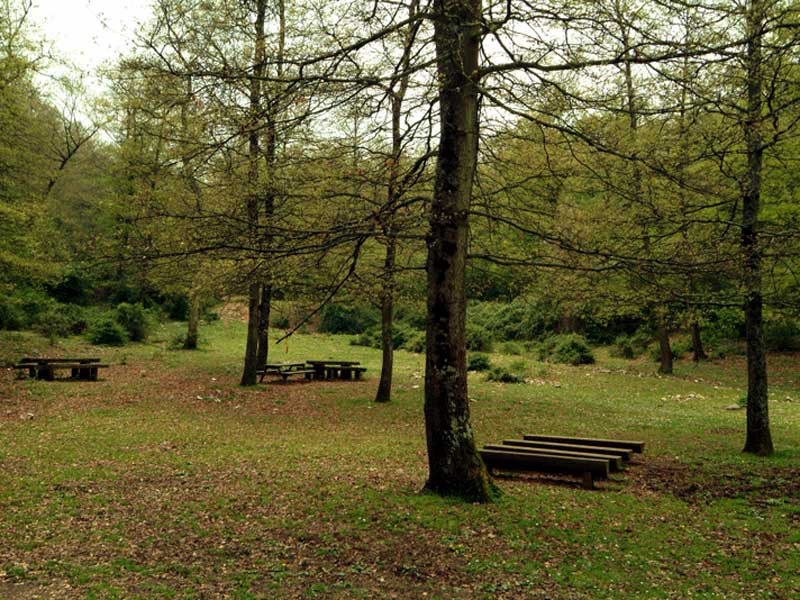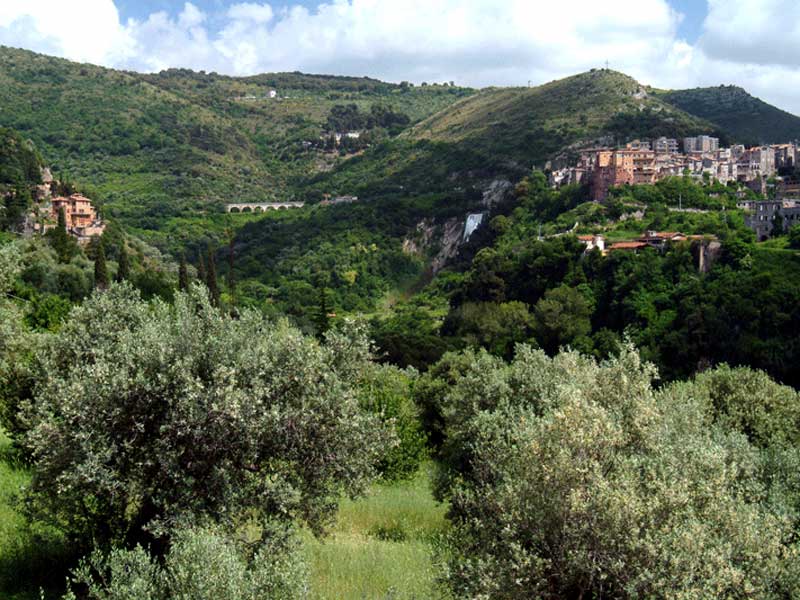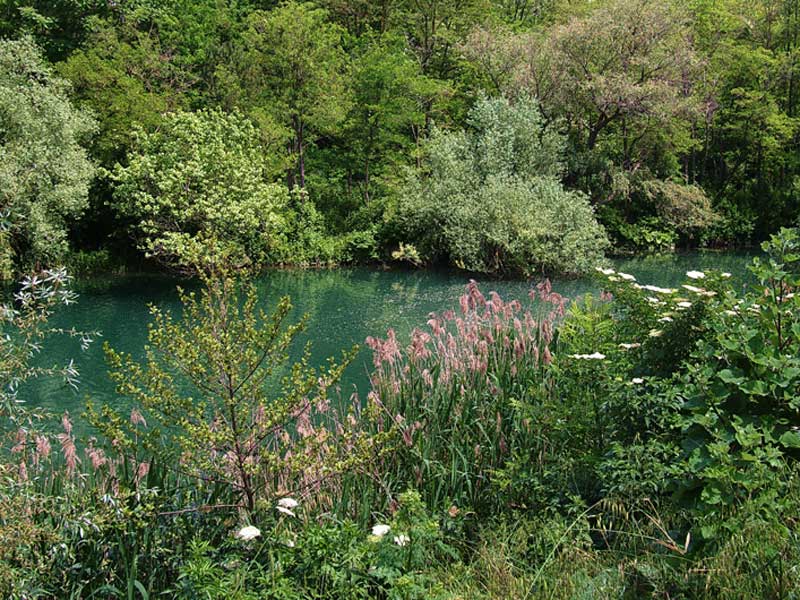Protected Area
Identity Card
- Land Surface Area: 1'319.00 ha
- Regions: Lazio
- Provinces: Roma
- Municipalities: Tivoli
- Establishment Measures: LR 29 06/10/1997
- PA Official List: EUAP1038
- Park Authority: Città Metropolitana di Roma Capitale
Monte Catillo Nature Reserve
Monte Catillo Nature Reserve covers about 1,320 hectares on the
Mountains of Tivoli, which are the natural sequel of the southern spurs
of Lucretili Mountains and are entirely situated in the Municipality of
Tivoli. Its name derives from a summit of Monti Comunali Tiburtini,
which stands out between Empolitana and Tiburtina roads next to the
urban area of Tivoli and can be easily recognized for the cross
dominating its top. The protected area is situated at the edges of the
Roman countryside and Cornicolana area, where a plain scattered with
low river terraces, tufaceous small hills, and calcareous islands gets
in touch with the first mountains of the Apennines. Along the trails
crossing the Reserve, dominated by the course of the river Aniene, you
can find a series of panoramic points looking over the Roman
countryside in the south-west, on the Apennines of Lazio in the
north-east and, locally, on the imposing waterfalls of the river
Aniene, the historical town center of Tivoli and Villa d'Este.
The
richness of the floristic and vegetational heritage characterizes the
area of Mt. Catillo and has led to the establishment of the Reserve
with conservation and safeguard aims; therefore, a botanic element has
been chosen as a symbol of the Reserve. The logo has been elaborated in
collaboration with the students of Istituto Superiore d'Arte of Tivoli, by using the stylized silhouette of a hybrid cork oak, a rare species which can be found in the woodlands.
Natural Environment
The area is entirely situated in the territory of the Municipality of
Tivoli. It is a calcareous mountain group which in some stretches has
all the features of a karstic plateau. You can enjoy from here
wonderful views over the Roman countryside in the south-west and the
Apennines of Lazio in the north-east and, locally, over the waterfalls
of the river Aniene and the temples dedicated to Vesta and Sibilla in
Tivoli.
The area lies in the point of passage between the
characteristic morphology of the Roman Countryside with its low
tufaceous hills and the first spurs of the Apennines consisting of
Tiburtini Mountains, of which Mt. Catillo is an integral part, and of
the adjacent Lucretili Mountains. The territory is well-delimited by
very harsh rocky spurs together with, in its inner part, an alternation
of hills and small valleys of karstic origin.
From the geological
point of view, the substratum is essentially made by Mesozoic rocks
dating back to 100-200 million years ago: they are mainly calcareous
rocks ("massive limestone") and calcareous-marly rocks and marnes
linked to the Apennine orogenesis, with differentiations due to the
seabed deposits. These rocks are characterized by intense fissuring
making them very permeable, and through the fissures the rain filter
and resurface downstream. The phenomena of karstic erosion are linked
to the presence of calcareous rocks and to their dissolution by surface
and subterranean waters: these phenomena are well-represented by
examples of "furrow fields", caves, and dolines.
Geology of Mt. Catillo
The protected area lies in the point of passage between the characteristic morphology of the Roman Countryside with its low tufaceous hills and the first Apennine spurs consisting of Tiburtini Mountains, of which Mt. Catillo is an integral part, and of the adjacent Lucretili Mountains.
The territory is well-delimited by very harsh rocky spurs together with, in the inner part, an alternation of hills and small valleys of karstic origin.
Further information (Italian text)
Flora and Vegetation
The flora and vegetation of the Reserve are extraordinarily diversified, not only for the great number of species living in the area, but also because the species are different for their geographical origin and ecology; in some cases they have considerable dimensions and can be found in large numbers, to the extent that they form woods, shrubs, and grasslands with the most varied compositions and structures.
From a geographical point of view, the Mountains of Tivoli are situated in an exchange knot where the so-called "western" species (adapted to an oceanic climate, where the summer dryness and the winter cold are mitigated by the Tyrrheanian influence) meet thermophilic species able to resist a relative dryness and where species which can be usually found on the volcanic substrata grow together with species which are ecologically linked to a calcareous substratum.
Further information (Italian text)
Fauna
The vertebrates are represented by typical species of the Apennines and the agricultural ecosystems which are linked to them. Among the birds, you can observe birds of prey like the Kestrel and the Buzzard, the Tawny Owl, the Owl, and the Scops Owl. The forest and shrub areas house several species of piciforms and passerines. Among the mammals, the wild boar, the fox; among the mustelids, the badger, the weasel, the stone marten; moreover, there are several species of rodents and insectivorous animals. Along the ditches and water basins there are the grass snake, the newts, and different species of amphibians. Reptiles are also worth a mention.
Further information (Italian text)








